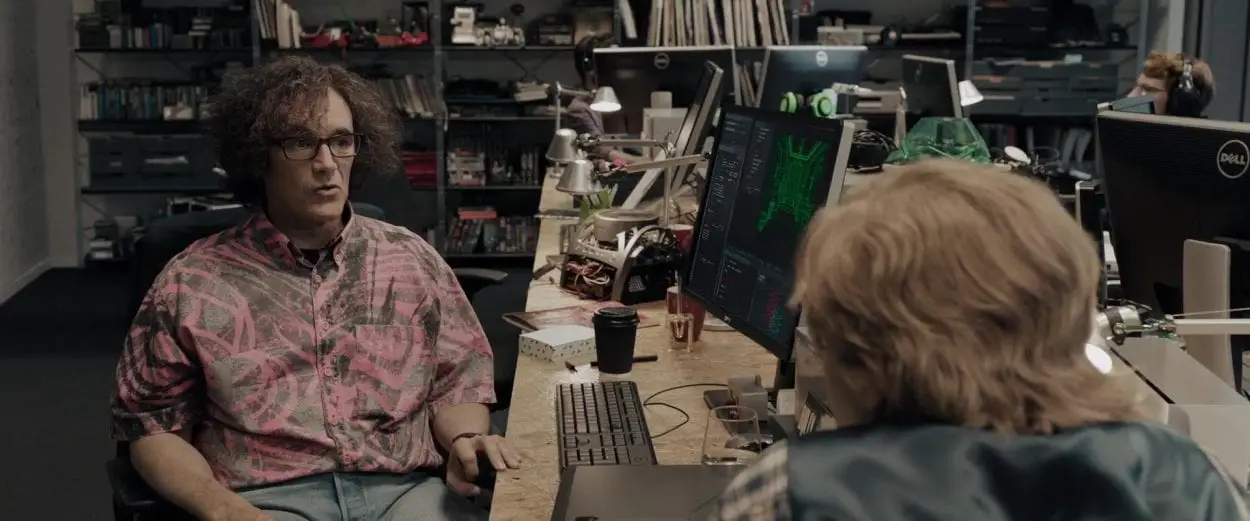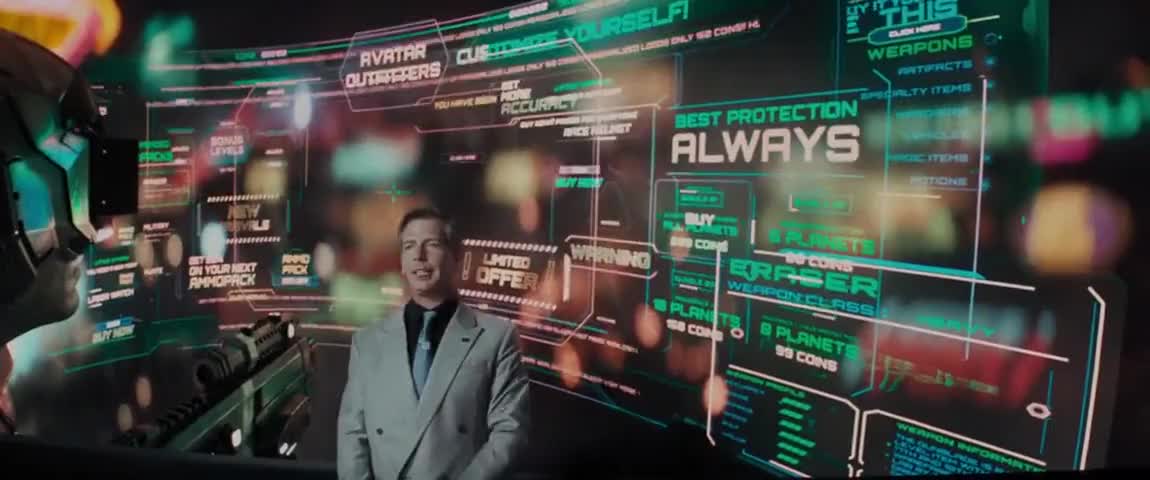Nowadays almost all the blockbusters that we ingest find themselves firmly rooted within the realms of the graphic novel/comic book adaptation. The two juggernauts at the head of that movement are the fine folks over at Marvel and DC, respectively. Even though I count myself among the hordes of fervent fans of those two giants, it is always good for not just the fan base but also the industry when something of an equal magnitude springs from a fresh well of inspiration.
The spring in question sprouts up so aptly like the oasis at the center of its own story. The one to lead us to this haven of sorts is none other than the master of the blockbuster himself, Steven Spielberg. In this 2018 outing, Spielberg would go about adapting the 2011 sci-fi novel Ready Player One written by Ernest Cline; Cline also co-wrote the screenplay for the adaptation with Zak Penn.
Just like the source material, the story is set in 2045 where much of humanity has disappeared into the virtual world known as the OASIS. This is a form of escapism that many of us know all too well. I consider myself a massive gamer and there is just something so alluring about removing yourself from the real and taking your consciousness on a journey into a whole new world. When you live a life that is a little more mundane than you want, then why not step back through time or explore an alien world?
We are living in the age of digital discovery and electronic exploration where anyone can be anything at any time. This is the same liberation that our characters thirst for so much, hence them taking refuge in the OASIS. In this VR world, they can take any form, they can traverse any world, they can do combat, go in search of artifacts, or seek out immortality (in a manner of speaking). That immortality they lust for comes in the quest for three keys that were hidden somewhere throughout the vast digital realm by its late creator James Halliday (Mark Rylance), who created the OASIS alongside his partner Ogden Morrow (Simon Pegg.)

Whoever discovers those said keys will become the sole proprietor of the OASIS and hold its future firmly in their hands. In this pursuit of such a lofty prize, there are two opposing sides, on one side Tye Sheridan as our protagonist Wade Watts/Parzival and on the other Ben Mendelson as the villainous Nolan Sorrento / IOI-655321. The two could not be any more polar opposites. Watts is a gaming purist, he believes in the challenge of the game, the grind, the work it out, beat it down, and break it wide open of it all.
Wade is the truest form of that aforementioned digital discoverer, always seeking out the hidden layer just beneath any gaming experiences surface. He seeks not just what others can’t find but what most don’t even know is there to look for. When you’re a gamer, there are few things more appealing than discovering the previously undiscoverable, to know the unknown. The search for Halliday’s keys is the epitome of this desire from all who have ever ventured into the realms of the unreal.
Whereas Wade Watts is the living breathing embodiment of the gamer within all if not most of us, on the other hand, Nolan Sorrento is emblematic of all that is wrong with the world of gaming. He is the symbol of big business. A mouth breathing, advert soliciting, soulless suit, he is a walking, talking microtransaction. He is the kind of person that does not use this limitless medium to create narratives and worlds beyond the imagining but instead just seeks the creation of wealth.

These are the kinds of people that have taken some of the shine from the industry with continuously releasing unfinished products that are riddled with in-game charges if one wishes to progress, giving the wealthy an advantage over the less fortunate but oftentimes more skilled. Sorrento does not view the OASIS as an escape; he sees it as unconquered territory, as a digital world where he can be King, one that he can craft into existence in his own image.
He is a corporate shill with nothing but the almighty buck as his motivator. This is no better exemplified than when he speaks about his vision for the OASIS and about how he plans to infest the world with in-game advertising, bringing the player to a near seizure while force-feeding them unwanted content. This is, unfortunately, something that we are becoming all too aware of as time goes by: formerly free and less invasive places such as online media have given in to corporate pressure and allowed advertisers to run rampant on their platforms.
This type of greed takes on another guise in the narrative of Ready Player One. The so-called “loyalty centers” are more than a little reminiscent of the click farms that plague online gaming. Less fortunate people are left to toil away in sweatshop-like conditions as the more affluent account holders go about their lives, arriving home at the end of the day to benefit from their ill-gotten gains. Just like in the real world of discovery, some see an opportunity for exploration whereas others just see it as a chance for exploitation.

This is more proof that no matter if the world is real or virtual it is human nature that dictates the shape it takes. This is something that Wade Watts saw more clearly than most—if you allow the same people to control the unreal, then it will just become an extension of the real instead of the enhancement that it was intended to be in the first place. He, like many people who step through their digital doorway to endless worlds, just wants to get lost and go wherever the road takes him.
It is impossible to immerse oneself and get lost in far off places if you are constantly being tethered to reality by the money-grubbing hand of the execs who often think it below them to take a voyage into those very same worlds. This capitalist interventionism is not the only through-line that runs along with the core of Ready Player One. The film is also filled with so much nostalgia for a simpler time. The whole movie is rife with ’80s and ’90s pop culture references; the creator of the OASIS longs for times gone by.
To me, it seems that the sense of nostalgia that James Halliday feels may be a reflection of the director Steven Spielberg’s longing for the way things used to be. The legendary filmmaker has been very vocal about his views on the change in how we digest our content. He has been more than a little derisive on his opinions of streaming services like Netflix, saying that the way they release content is hurting the theatrical experience.
You can feel Spielberg’s yearning for yesteryear through his characters. They look back and want so much for what seems like a less complex time. I think this is a human flaw that we all share. Looking back seems less frightening and simpler than guessing what’s yet to come. We have a tendency to gaze back through time with rose-colored glasses. Oftentimes, forgetting that the past too was filled with its own complexities and may not be as simplistic as we like to remember it.
I think this was a common complaint made about Ready Player One upon its release, that it was too backward viewing in its narrative, that we have this futuristic world filled with brilliant young people and all they do is focus on the past. They seemed like a generation void of its own popular culture that they just leeched from what has come before. On the other hand, you could say that the central protagonist Wade Watts/Parzival is lacking in his own identity and he is just trying to emulate his hero James Halliday.
Then we see as the story progresses that he learns he needs to create his own sense of self and shake free of the past. This is no better exemplified than when he completes the final challenge and takes control of the OASIS himself. He decides to close the virtual world for two days every week, on Tuesdays and Thursdays. Wade does this to allow not just himself but the entire population of the OASIS and the wider world a chance to breathe.

He comes to this realization when he finds love in the OASIS with Art3mis and her avatars controller Samantha (Olivia Cooke) in the real world. It is like Wade said, he just went there to escape, but he found something much bigger than himself. He found his friends. He found love, and now people have lost their lives. This is when it hits home for Wade that the OASIS is not the only world that needs saving, the real world does too. He can no longer just lose himself in the digital realm, and Wade Watts’ life is every bit as important as Parzival’s.
This is a reminder to us all that while it is good and should be encouraged to escape from time to time, it is so important not to lose yourself entirely. Even though it is so much fun to go to these far off and vast worlds, we should not ignore the vast world that is all around us. It too lies waiting to be discovered if we can be brave enough to go out and explore it for ourselves.
Ready Player One shows us that one needs to explore both worlds with the same sense of freedom and vigor. It tells us that we need to have a dual thirst for virtual and real exploration. Through this duality, we will discover not just new places but new people that we may never have encountered otherwise.




